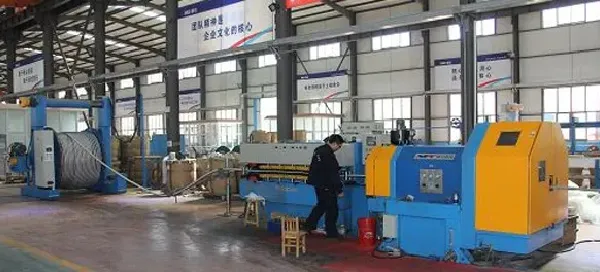10 月 . 31, 2024 12:46 Back to list
Different Categories of Electric Wiring and Their Uses
Types of Electric Cable Wires
Electric cables are vital components in electrical installations, providing the necessary pathways for electrical current to flow. Understanding the various types of electric cable wires is essential for electricians, engineers, and even DIY enthusiasts. Here, we will explore some common types of electric cable wires and their applications.
1. Non-Metallic Sheathed Cable (NM Cable)
One of the most commonly used types of electrical wire is NM cable, often referred to as Romex. It consists of two or more insulated conductors and a bare ground wire, all encased in a non-metallic sheath. This type of cable is typically used in residential wiring for lighting and receptacle circuits. Due to its flexibility and ease of installation, NM cable is popular among electricians for indoor projects.
2. Armored Cable (AC Cable)
Armored cable, also known as BX cable, is designed for protection against physical damage. It features a flexible metal sheath that encases the insulated conductors. This type of cable is often used in commercial and industrial applications where extra protection is needed, such as in locations vulnerable to impact or harsh environments.
3. Underground Feeder (UF Cable)
UF cable is designed for direct burial applications. It can withstand moisture and is therefore ideal for outdoor wiring projects. UF cable is commonly used to supply power to outdoor lighting, fountains, and other installations that require underground wiring. The cable is resistant to moisture and is suitable for wet locations without additional protection.
types of electric cable wire

4. THHN/THWN Wire
THHN (Thermoplastic High Heat-resistant Nylon-coated) and THWN (Thermoplastic Heat and Water-resistant Nylon-coated) wires are among the most versatile types of single conductor wires. They are commonly used in commercial and industrial applications. THHN can withstand high temperatures, while THWN is rated for wet conditions, making them suitable for various installations, including conduit systems.
5. Coaxial Cable
Coaxial cable is a specialized type of wire primarily used for transmitting television signals and internet data. It consists of a central conductor, insulating layer, metal shielding, and an outer sheath. The shielding protects the signal from electromagnetic interference, making it ideal for maintaining the quality of data transmission over long distances.
6. Fiber Optic Cable
While not a traditional electrical wire, fiber optic cables are crucial for modern telecommunications and networking. These cables transmit data in the form of light, allowing for extremely high-speed data transfer and minimal signal loss over long distances. Fiber optic technology is becoming increasingly prevalent in internet infrastructure, offering faster and more reliable connections.
Conclusion
Choosing the appropriate type of electric cable wire is essential for ensuring safety, functionality, and efficiency in electrical installations. By understanding the different types of cables and their specific applications, professionals and homeowners alike can make informed decisions in their electrical projects. Whether for residential use or intricate industrial systems, selecting the right cable enhances performance and safety.
Share
-
Understanding the Differences Between Wafer Type Butterfly Valve and Lugged Butterfly ValveNewsOct.25,2024
-
The Efficiency of Wafer Type Butterfly Valve and Lugged Butterfly ValveNewsOct.25,2024
-
The Ultimate Guide to Industrial Swing Check Valve: Performance, Installation, and MaintenanceNewsOct.25,2024
-
Superior Performance with Industrial Swing Check Valve: The Essential Valve for Any SystemNewsOct.25,2024
-
Industrial Swing Check Valve: The Ideal Solution for Flow ControlNewsOct.25,2024
-
You Need to Know About Industrial Swing Check Valve: Functionality, Scope, and PerformanceNewsOct.25,2024